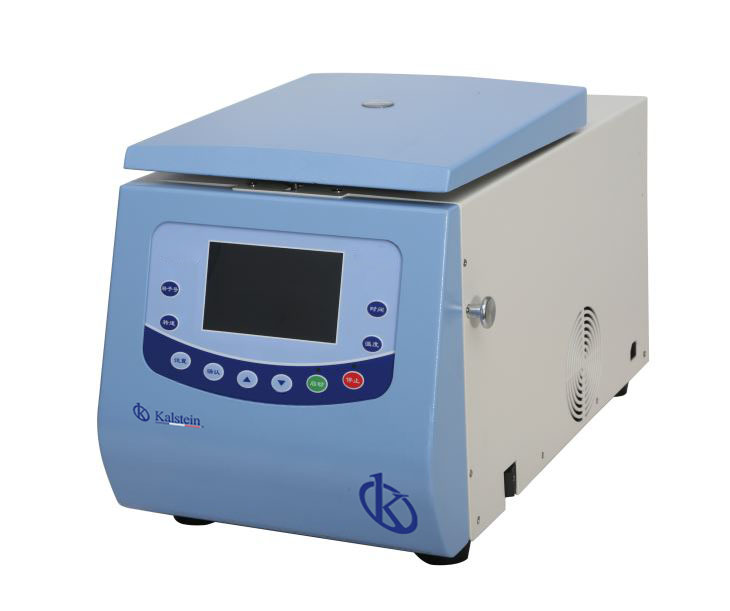This is an indispensable equipment for any laboratory, it is designed for material separation in the areas of molecular biology, medicine and in the food industry; its function is based on gravity and mass, i.e. it separates particles in a heterogeneous solution according to their size and density and performs this process in a faster and more efficient time., if you want to know the characteristics of this equipment just visit HERE
However, as this process is carried out, the centrifuge contains a rotor where the test tubes containing the sample are located; to then centrifuge, these tubes are placed inside a rotor, which the most important part of the centrifuge, there are two types of rotors; the angular rotor having a fixed angle of 45° relative to the axis of rotation, and the horizontal or tilting rotor having an angle of 90° relative to the axis of rotation.
Angular rotor centrifuge
This type of rotor remains fixed during the centrifuge process and the sedimentation of the particles forms sideways; since the matter is separated towards the centrifugal force angle, thanks to its more rigid metal alloy it can withstand a higher centrifugal force.
Thus, the angular rotor is used when a high number of revolutions is required, in addition to being practical for large volumes with high density particle solutions, thanks to its angle of inclination the total path have to travel the particles which triggers a faster and more effective sedimentation thus reducing the risk of mechanical failures.
When used with an angular rotor
They are used in processes where we require a sedimentation with high centrifugal forces of up to 60 000 x g, so they are mostly required in research laboratories; the angular rotor is ideal for applications that require higher relative centrifugal force values, for example, to obtain components from the cell and its subsequent investigations.
Its most frequent applications are for the simplest separations such as: cells, cellular organelles, membranes, proteins more or less aggregated according to the cases and especially in sequential separations at increasing rotational speeds.
Horizontal or tilting rotor centrifuge
This rotor allows that when the centrifuge force is applied it rocks and holds the cells in a position of 90° in relation to the axis, because of this the granulated material is formed at the bottom of the tube, it is the best option to centrifuge as it offers a better location for sedimentation.
It has characteristics that during the equipment stop maintain the vertical position and then in operation acquires a horizontal angle so the particles go to the background and are frequently used for low volume research applications.
When using a horizontal rotor
They are used when we require sedimentation analysis with small centrifugal forces up to approximately 6000 x g, for use in medical and research laboratories; In addition, they offer higher performance as it is possible to fill the centrifuge test tube completely, and sedimentation takes place in the center of the lower part of the test tube, allowing easy phase separation.
We can use this type of break when the analysis or study focuses basically on particle separation by density gradient and provides great versatility given the possible use of very different tube sizes in a single head.
As we have already understood each rotor model has different settings and different applications, but you can only purchase the best quality ones with us KALSTEIN and you can do it through online shopping channels, we invite you to HERE and enjoy the catalog of high quality equipment and the best price you will find in the market and only high level manufacturers can offer you, with great demand buy-sale worldwide, our Kalstein Laboratory Equipment Company, offers you great advantages of warranty and commitment, ensuring a team with superior technology and high performance.

